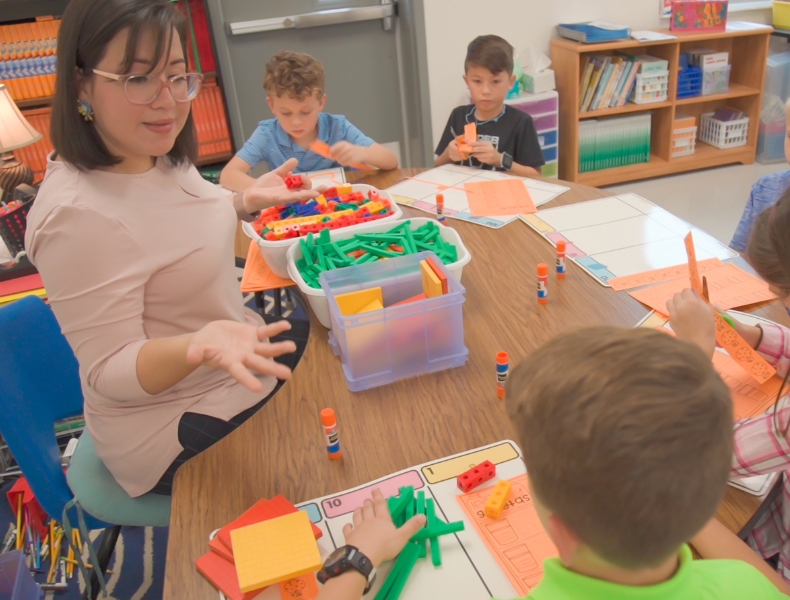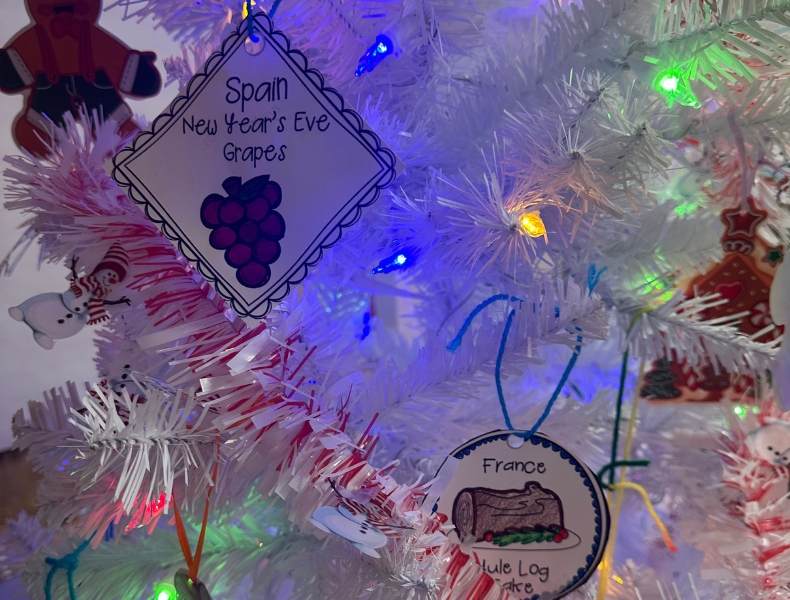Large-scale findings from North Carolina show that students in dual language immersion (DLI) programs outperform their peers in math, revealing how bilingual learning sharpens focus, reasoning, and problem-solving skills.
Key Findings
- In 2025, 64% of students in Participate Learning Dual Language Programs achieved proficiency in math.
- Over the same period, 55.4% of non-DLI peers achieved proficiency.
- The analysis includes nearly 5,000 fifth graders across multiple North Carolina districts.
- The results are statistically significant, demonstrating the connection between bilingual instruction and stronger math outcomes.

What Is Dual Language Immersion?
Dual language immersion is an educational approach where students learn academic content in two languages. In these programs, both native English speakers and speakers of a target language (like Spanish) learn together, with instruction delivered in both languages throughout the school day.
Most dual language immersion programs follow one of two models. In the 90/10 model, 90% of instruction begins in the target language in kindergarten, gradually shifting to 50/50 by upper elementary grades. The 50/50 model maintains equal instruction time in both languages from the start.
This approach develops biliteracy, the ability to read, write, speak, and listen proficiently in two languages, while building global competence.
Do Dual Language Students Perform Better in Math? Here’s What the Data Show
Data from nearly 5,000 fifth graders across North Carolina reveal a consistent advantage for students in dual language immersion classrooms designed and supported through Participate Learning partnerships:
- In Participate Learning Dual Language Programs, 64% of students achieved math proficiency, compared to 55.4% of non-DLI peers.
- The 8.6 percentage-point difference represents hundreds more students meeting grade-level expectations, ensuring that these students are better prepared for advanced math and STEM pathways.
- The results hold steady across districts in a large sample size, pointing to a consistent and replicable pattern.
Educators and administrators who have worked with Participate Learning have long observed this trend anecdotally. Now, the data confirm what they’ve seen in their classrooms: Participation in high-quality dual language immersion programs is associated with higher math achievement.

Why DLI Math Achievement Matters for U.S. Schools
Math proficiency is linked to long-term academic confidence, college readiness, and access to future career opportunities in STEM and beyond. Yet, according to the National Assessment of Educational Progress (NAEP), only 28% of eighth graders reach a grade-appropriate proficiency level in math.
Families and communities want schools to prepare students for a world that demands analytical thinking, logic, and problem-solving—and many districts are looking for approaches that deliver meaningful, lasting improvement.
Dual language immersion offers one promising path forward. Schools that partner with Participate Learning report that students in bilingual classrooms are not only mastering language skills but also developing the focus and flexibility that math demands. The result is a learning environment that supports academic growth across multiple domains.
How Bilingual Learning Strengthens Math-Related Cognitive Skills
Research in cognitive science has shown that bilingualism strengthens the mental processes that support analytical thinking and problem-solving. Learning through two languages exercises the same cognitive muscles students rely on for mathematics:
- Inhibitory Control
- Cognitive Flexibility
- Working Memory
- Metalinguistic Awareness
Math proficiency represents just one of the many advantages of dual language immersion. Studies show that bilingual education delivers wide-ranging cognitive benefits that enhance learning across academic areas, from reading to science. The schools participating in Participate Learning’s K–5 Dual Language Programs have demonstrated this connection year after year, showing that bilingual instruction does far more than develop fluency in the target language; it builds the foundation for higher-order reasoning and academic resilience.
Students in dual language immersion programs develop stronger executive function skills, including improved attention control, cognitive flexibility, and working memory. These mental processes form the foundation for problem-solving and analytical thinking, skills essential for academic and career success.
Our white paper explains these links in detail and includes references to the studies that inform this work.
Lessons from Two Decades of Dual Language Partnerships
Over nearly two decades of partnering with schools and districts to design and sustain dual language immersion programs, Participate Learning has identified several practices that consistently lead to strong outcomes:
- Curriculum Integration and Language Allocation
- Teacher Preparation and Ongoing Support
- Leadership Commitment and Vision Alignment
These foundational elements, combined with ongoing assessment and program refinement, create the conditions for academic success across all content areas, including the math achievement gains demonstrated in our North Carolina dual language immersion data.

Sharing Data to Strengthen the Dual Language Field
The results from nearly 5,000 North Carolina DLI students reflect years of collaboration between schools, district leaders, and Participate Learning’s program teams. By releasing these findings, we aim to contribute meaningful data to a growing national conversation about how bilingual learning supports academic growth across content areas.
As the demand for high-quality dual language programs continues to grow, our shared goal as educators remains the same: To ensure that every student, regardless of background, has access to instruction that develops both academic skills and linguistic confidence.
These results highlight what’s possible when schools invest in programs that value both academic achievement and the development of bilingual, biliterate, and globally competent students.
Key Takeaways for Educators and District Leaders
The numbers tell a powerful story, but they’re just the beginning.
Research and classroom data together show that bilingual learning environments enhance the cognitive skills that drive academic success beyond just language skills. When supported by aligned leadership and sustained professional learning, dual language immersion can serve as a long-term strategy for improving achievement and building systems that help every student thrive.
To explore the full findings and discover practical insights for your district, read the white paper Math Achievement in Dual Language Immersion: Evidence from Participate Learning’s K–5 Program.




